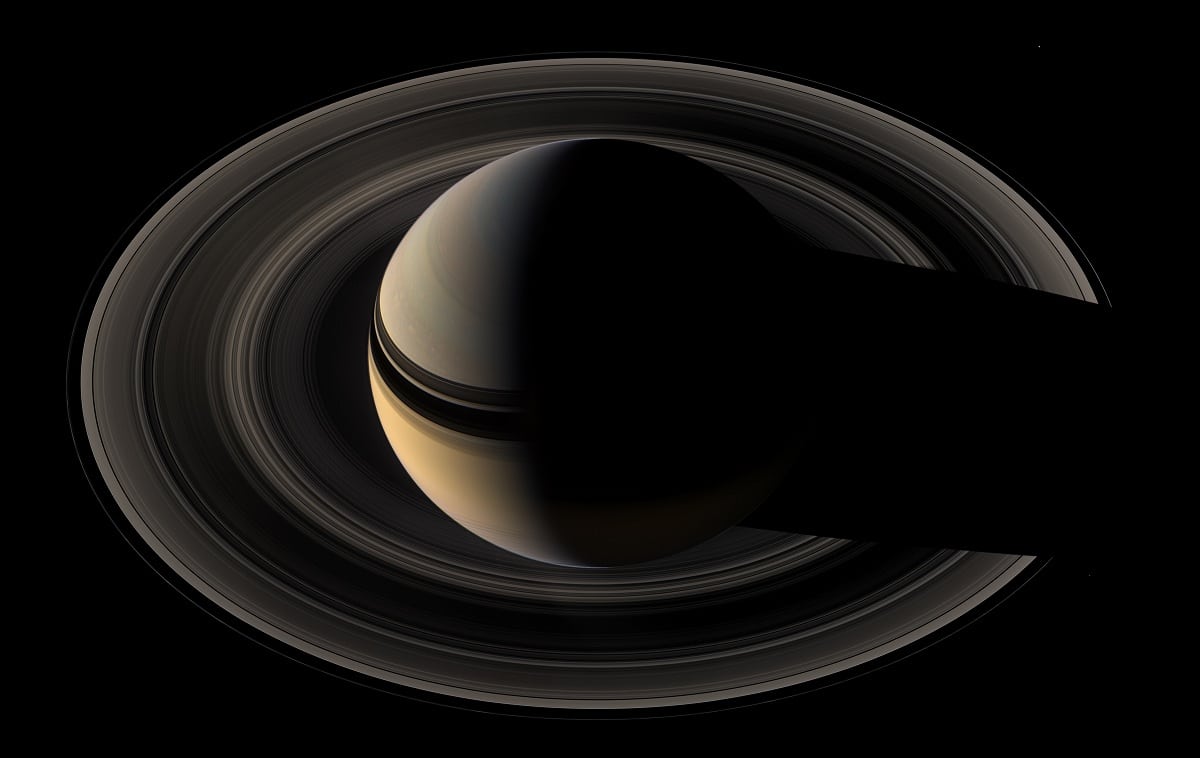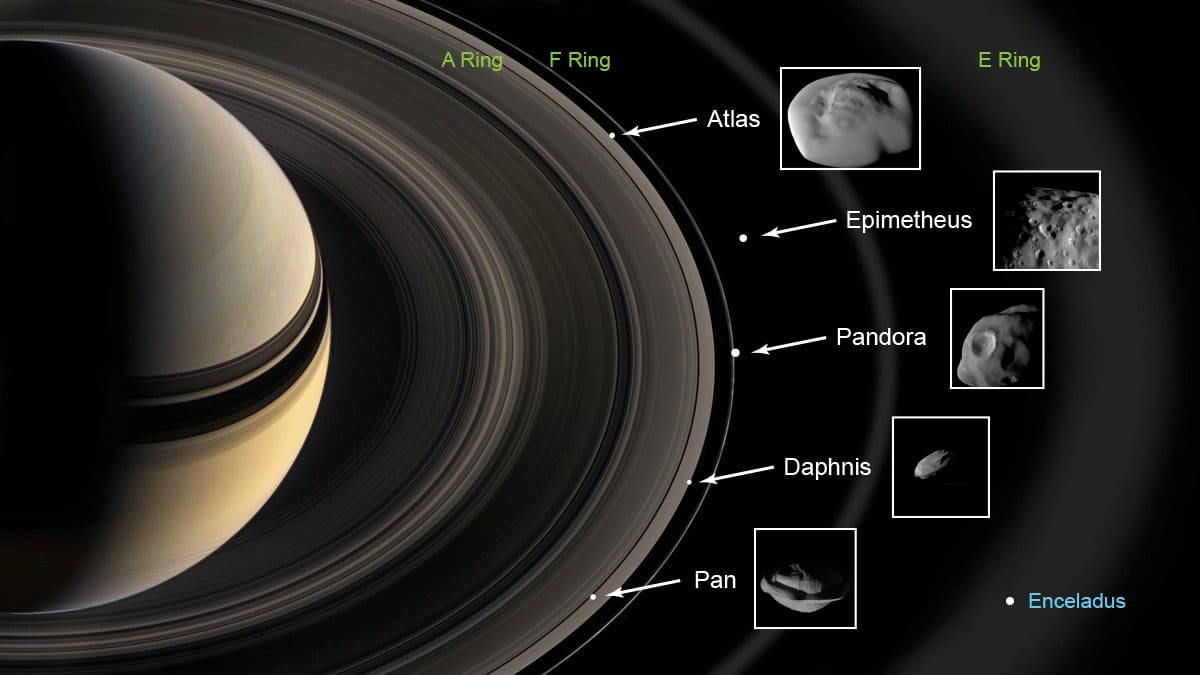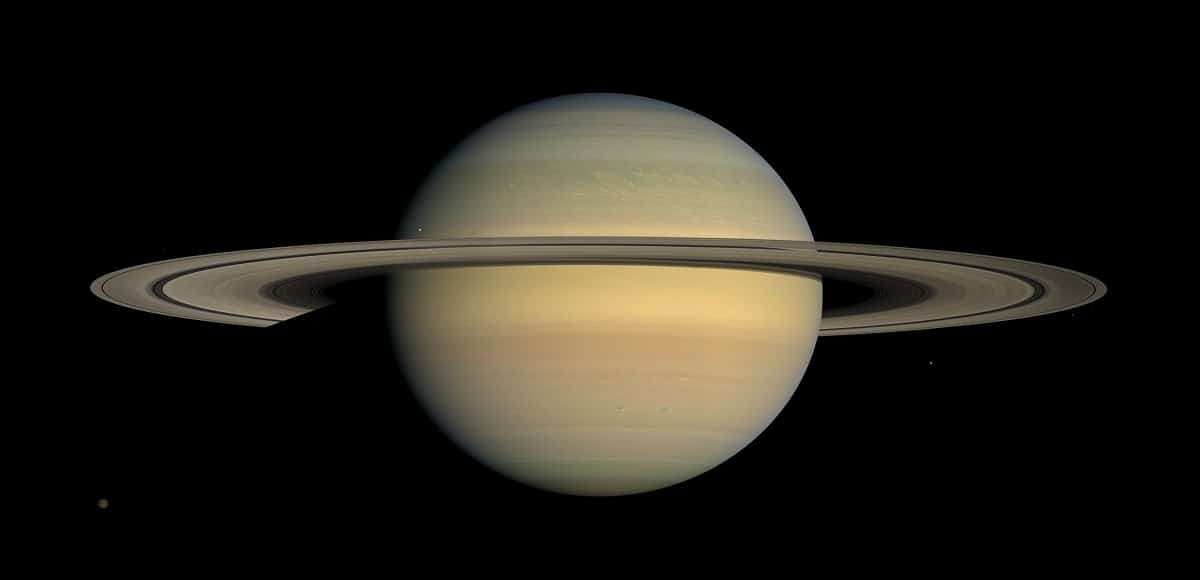
Saturn is one of the planets that belongs to the solar system and is within the group of gaseous planets. It stands out for having rings and is one of the two largest and most famous planets in our solar system. It can be easily viewed from the ground thanks to the Saturn's rings.
In this article we are going to tell you everything you need to know about Saturn's rings, how they were formed and what their characteristics are.
The planet with rings

Saturn is a special planet. For scientists, it is considered one of the most interesting planets to understand the entire solar system. It is worth noting that it has a much lower density than water and is composed entirely of hydrogen, with a small amount of helium and methane.
It belongs to the category of gas giant planets and has a rather peculiar color that makes it unique. It is a bit yellowish, in which small strips of other colors are combined. Many people mistake it for Jupiter, but they have no relationship. They are clearly distinguished by the ring. Scientists assume that their rings are made of water, but they are solid like icebergs, icebergs, or some snowballs, especially in combination with certain types of chemical dust.
Windscreens

Among all these fascinating characteristics that make Saturn such an interesting planet, we must also highlight the moons that compose it. So far, 18 satellites have been recognized and named by expert physicists in the field. This gives the planet greater relevance and versatility. To better understand them, we will list some of them.
The most famous are the so-called Hyperion and Iapetus, which are composed entirely of water inside, but are so strong that they are respectively assumed to be basically frozen or exist in the form of ice. Saturn has internal and external satellites. Among the internal structures, the most important is the internal structure where the orbits called Titans are located. It is one of the largest moons of Saturn, although it is surrounded by a dense orange fog, it is not easy to see.
Saturn has internal and external satellites. Among the internal structures, the most important is the internal structure where the orbits called Titans are located. It is one of the largest moons of Saturn, although it is surrounded by a dense orange fog, it is not easy to see. The Titan satellite is one of the satellites basically made up almost entirely of nitrogen.
The interior of this satellite is composed of rocks composed of chemical elements such as carbon hydroxide and methane, which are similar to ordinary planets. The quantity is usually the same, at most they will say, even if the size is the same.
Saturn's rings

Saturn's ring system is primarily made up of icy water and falling rocks of various sizes. They are divided into two groups, separated by the "Cassini Division": ring A (outer) and ring B (inner), according to their proximity to the planet's surface.
The division's name comes from its discoverer, Giovanni Cassini, a naturalized French-Italian astronomer who discovered a separation of 4.800 kilometers wide in 1675. Group B consists of hundreds of rings, some of which have elliptical shapes that show changes in wave density due to the gravitational interaction between the rings and the satellite.
In addition, there are some dark structures called "radial wedges" that rotate around the planet at a different speed than the rest of the ring material (their movement is controlled by the planet's magnetic field).
The origin of radial wedges is still unknown and can appear and disappear statically. According to data obtained by the Cassini spacecraft expedition in 2005, there is an atmosphere around the ring, composed mainly of molecular oxygen. Until 2015, theories about how Saturn's rings were produced couldn't explain the existence of tiny ice particles.
Scientist Robin Canup published her theory that during the birth of the solar system, a satellite of Saturn (made up of ice and a rock core) sank into the earth and caused a collision. As a result, huge fragments were ejected to form a halo or ring of various particles, which continued to collide with each other as they lined up in the planet's orbit, until they produced the large rings that are known today.
Exploring the rings of Saturn
In 1850, the astronomer Edouard Roche studied the influence of planetary gravity on his satellites and calculated that any matter located below 2,44 times the radius of the planet could not coalesce to form an object and if it was already an object, it would break apart. Saturn's inner ring C is 1,28 times the radius and the outer ring A is 2,27 times the radius. Both are within Roche limits, but their origins have yet to be determined. With the material they contain, a sphere similar in size to the moon can be formed.
The fine structure of the ring was originally attributed to the gravity of nearby satellites and the centrifugal force generated by the rotation of Saturn. However, the Voyager probe found dark structures that could not be explained in this way. These structures rotate on the ring at the same speed as the planet's magnetosphere, so they can interact with its magnetic field.
The particles that make up Saturn's rings vary in size, from microscopic pieces to large, house-like pieces. Over time, they will collect the remains of comets and asteroids. Much of the material that forms them is ice. If they are very old, they will turn black due to the accumulation of dust. The fact that they are bright shows that they are young.
In 2006, the Cassini spacecraft discovered a new ring while traveling in the shadow of Saturn on the opposite side of the sun. Solar concealment makes it possible to detect particles that are not normally visible. The ring between F and G coincides with the orbits of Janus and Epimetheus, and these two satellites almost share their orbits and regularly swap them. Perhaps the meteors that collide with these satellites will produce ring-forming particles.
I hope that with this information you can learn more about the rings of Saturn and their characteristics.
I am filled with joy and new knowledge with this relevant topic of our infinite universe, hope you continue to enrich us with such useful knowledge.